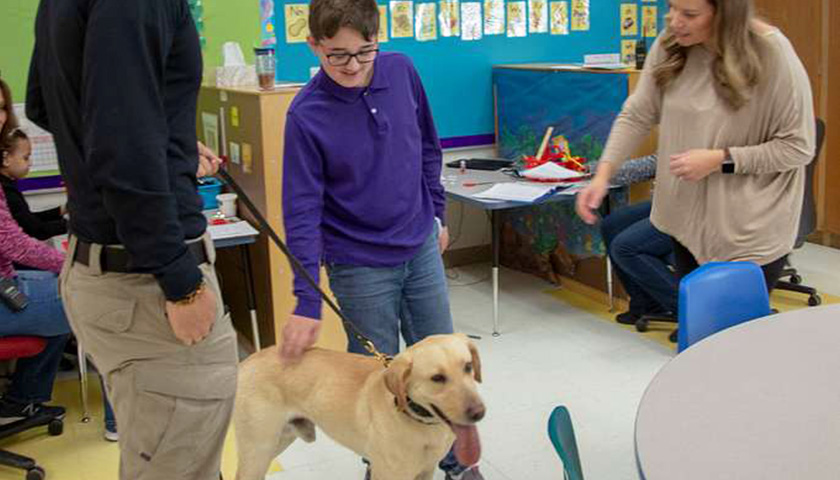by Scott McClallen
Michigan schools are spending $6 billion of federal COVID relief to recover from pandemic learning loss with solutions ranging from summer school to support dogs to even a new amphitheater.
Spending records obtained by more than 90 records requests show schools deploying a range of recovery mechanisms, including smaller class sizes, more tutoring, facility improvements and new heating, ventilation, and air conditioning systems.
Grand Ledge Public Schools is spending $90,000 on facility support dogs via the group Canines for Change. Jackson Public Schools spent more than $967,000 on vaccine stipends, and plans to pay more than $28 million to staff and others.
Dearborn Public Schools spent about $23 million on a “robust” summer school program that reached more than 8,400 students, and also paid about $13 million for staff retention and recruitment.
South Haven Public Schools spent $349,052 on success coaches assigned to at-risk students for college and career counseling. Pontiac City Schools District spent more than $600,000 on behavior and social worker pay and $1.8 million on 84 after-school tutors and learning materials.
Schools must allocate Elementary and Secondary Schooling Emergency Relief III by late 2024 and spend it by late 2026. ESSER III spending data from the Edunomics Lab at Georgetown University shows that as of late October, many Michigan schools have barely started spending the last tranche of COVID funds. The data show Flint Community Schools has spent 12%, or $11.9 million of its $99 million of ESSER III funds, while Detroit Public Schools Community District has spent nearly 30%, or $241 million of more than $809 million of ESSER III funds.
Many districts are spending ESSER III money to fund major building repairs
The Wayne-Westland Community School District is spending $16.5 million on facility acquisition, construction, and improvement costs, while Lansing School District is spending $19 million on HVAC, and Dearborn Public Schools is planning $40 million of HVAC work.
Schools paid retention bonuses, hazard pay, and added staff perks. Harrison Community Schools planned spending $150,000 on activities that promote staff health and wellness, including massage chairs for each teacher’s lounge, yoga, and fitness challenges. HCS is spending $460,796 on an outside concrete amphitheater as a learning space, as well as adding picnic tables at other buildings “to reduce the risk of virus transmissions during high-risk periods.”
Southfield Public Schools spent $2.7 million on hazard pay to 600 staff, with compensation ranging from $750 to $3,000. SPS spent $140,000 for an architect to design isolation rooms and prepare for virus outbreaks, and more than $202,000 on school improvements to reduce COVID spread, including fans, plexiglass, and replacing carpet with luxury vinyl tile “that would provide better air quality in the room.”
Some schools made permanent changes to reduce future COVID spread or to attempt contact tracing. Bay City School District plans to spend $250,000 to accommodate social distancing at a Central High School locker room, $2.5 million to develop an outdoor community space, and $5.8 million on furniture to enhance learning environments for about 8,000 students.
Grand Ledge Public Schools spent $131,820 on 23 high-definition bus cameras for COVID contact tracing.
– – –
Scott McClallen is a staff writer covering Michigan and Minnesota for The Center Square. A graduate of Hillsdale College, his work has appeared on Forbes.com and FEE.org. Previously, he worked as a financial analyst at Pepsi.
Photo “Child and Dog at School” by Defense Visual Information Distribution Service.





